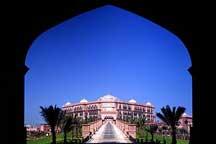 Jul. 20, 2025
Jul. 20, 2025
Weather
Chinese medicated diet
2009-09-10 13:44 BJTHistory of Chinese Medicated Diet
Chinese medicated diet has a long history. The ancient legend "Shennong Tastes a Hundred Grasses "shows that early in remote antiquity the Chinese nation began to explore the function of food and medicaments (substance used for medicine).
In the Zhou Dynasty (11th century-256BC), royal doctors were divided into four kinds. One of them consisted of dietetic doctors who were in charge of the emperor's health, preparing diets for him.
In Shennong's Herbal Classic, which was published approximately in about the Qin (221-206BC) and Han (@)"BC-220) Periods and is the earliest monograph extant on materia medica, many sorts of medicaments which are both drugs and food were recorded, such as sesame, Chinese yam, grape, walnut kernel, lily bulb, and fresh ginger.
According to history books, up to the period of the Sui (581-618) and Tang (618-907) dynasties, about more than sixty kinds of books on dietetic treatment had been published. But unfortunately most of them are now lost.
The book Dietotherapy of Materia Medica by Meng Xian in the Tang Dynasty had a great influence on later generations. It is the extant and earliest monograph on dietetic treatment.
In the Ming Dynasty (1368-1644), Li Shizhen collected and recorded in his Compendium of Materia Medica many medicated diet prescriptions, dozens of which were about medicated gruel alone, with dozens more solely touching on medicated wine and nothing else.
 Mail
Mail Share
Share Print
Print


 Video
Video









 2009 China Central Television. All Rights Reserved
2009 China Central Television. All Rights Reserved